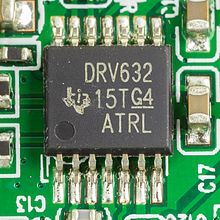Line amplifier
As a line amplifier , and line drivers (from English line driver ) or extender is called an electronic amplifier circuit to improve the quality in the transmission of electrical signals. The line amplifier increases the level of a useful signal before it is fed into a transmission line, compensating for attenuation losses and reducing interference, as the higher signal level allows the make-up amplifier at the other end of the line to work with a lower gain factor. At the same time, the possible range of the transmission is increased.
Line drivers are used in both analog and digital transmission and communications technology - for example antenna and CATV technology. They can also be used for intentional signal distortion by overdriving subsequent amplifier stages, for example in guitar amplifiers .
See also
literature
- Gregor Häberle, Heinz Häberle, Thomas Kleiber: Expertise in radio, television and radio electronics. 3rd edition, Verlag Europa-Lehrmittel, Haan-Gruiten, 1996, ISBN 3-8085-3263-7
Individual evidence
- ^ Karl-Heinz Radde: Langenscheidt Routledge specialist dictionary compact technology . Langenscheidt Fachverlag, 2003, ISBN 3-86117-217-8 , p. 358 .
- ↑ Dieter Conrads: Telecommunications: Fundamentals, procedures, networks . Vieweg + Teubner, 2004, ISBN 3-528-44589-0 , pp. 134 .
